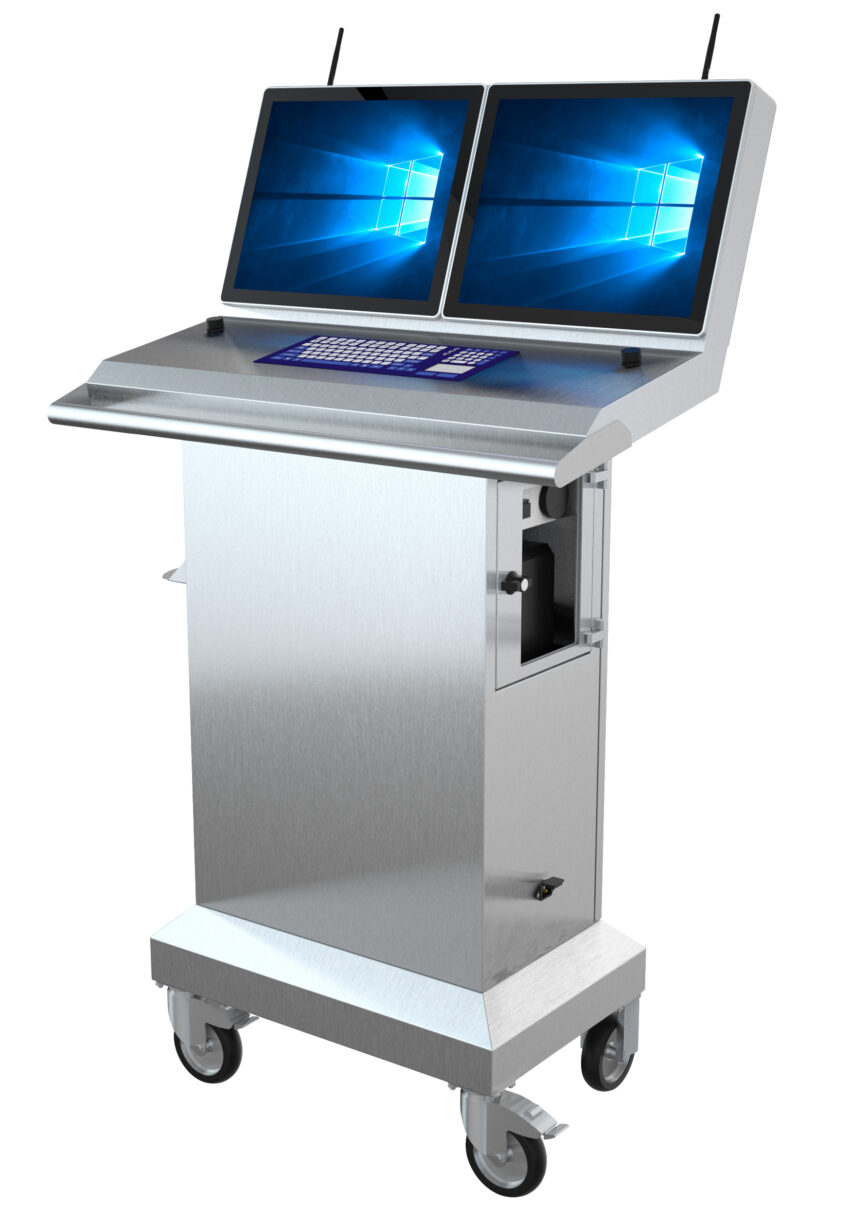The pharmaceutical sector continues to grow at an exponential rate, fueled in part by new markets that are driving innovation, such as COVID-19, which has created the need for new vaccines and pandemic-related therapeutics. Emerging technologies such as cell and gene therapies are also gaining traction and driving expansion. As this growth continues, efficiency and a high level of productivity are becoming essential tools for pharmaceutical companies that want to remain competitive. Much of what drives these effective work behaviors begins at employees’ workstations.
To this end, industry innovators have developed fully mobile workspace solutions that will help employees increase productivity while keeping them free to move seamlessly from point to point without the inconvenience caused by wires.
“When it comes to large support systems like workstations, the ability to move the tool from one place to another maximizes its utility and reduces equipment redundancy. In addition, using mobile workstations enables rapid and easy reorganization of the work environment and process flow for more flexible management,” says Paul Shu of ARISTA Corporation, a leading provider of computing platforms and visualization display products for pharmaceutical manufacturing environments.
“However, the problem with most mobile workstations is that they aren’t truly ‘mobile.’ While they can be moved around from one place in a facility to another, they can’t be used while in motion. Each time, all power and signal cables must be disconnected, rolled, and stowed, and then stored or transported with the units, then reconnected,” he adds.
The Benefits of Truly Mobile Workstations
• Some systems like ARISTA’s Mobile Operator Workstation can move while operating wire-free free with a lithium-ion battery that holds a 24-hour charge, allowing use over consecutive shifts.
• Wi-Fi capability is built into the workstations to allow for uninterrupted wireless communication in all corners of the laboratory, cleanroom, and factory. Since most advanced pharmaceutical facilities have Wi-Fi-based system backbones connected to legacy subsystems, the workstations can communicate directly with the facility’s server.
• With a mobile workstation, manufacturing execution systems, electronic batch records (EBR), SOP, ERP, and other back-end systems can all communicate directly with wireless connections, eliminating extra steps.
• With no cables to be disconnected, managed, and reconnected, and with no break in any live or critical connections to re-establish, pharmaceutical manufacturers can save time and significantly increase productivity.
• Some units are completely enclosed and regulatorily compliant, allowing use in sensitive pharmaceutical environments like cleanrooms. “With all of the demanding, evolving, and competitive dynamics in the pharmaceutical industry today, a truly mobile, wireless, self-contained workstation powered by a heavy-duty battery is the workstation of choice for convenience, safety, and efficiency in the pharmaceutical cleanroom,” Shu says.
For more information, contact ARISTA Corporation at (510) 226-1800, e-mail sales@goarista.com, or write to 48460 Lakeview Blvd., Fremont, CA 94538.

